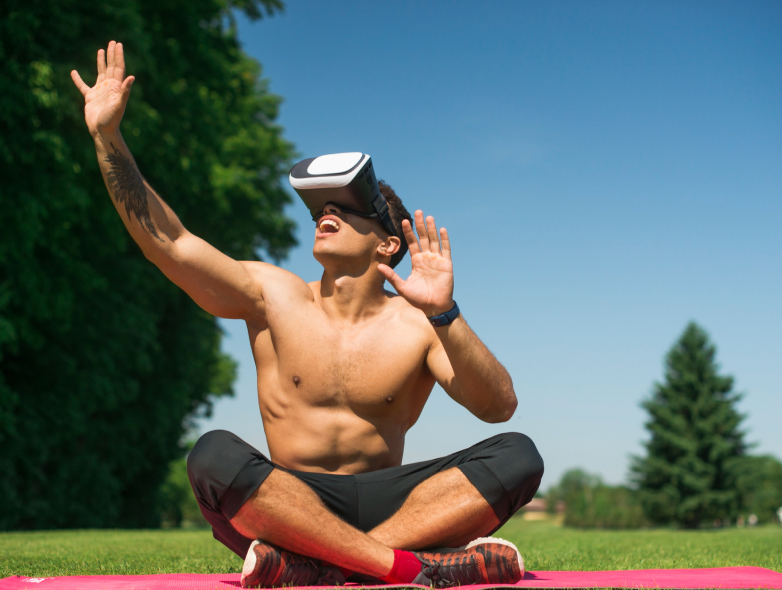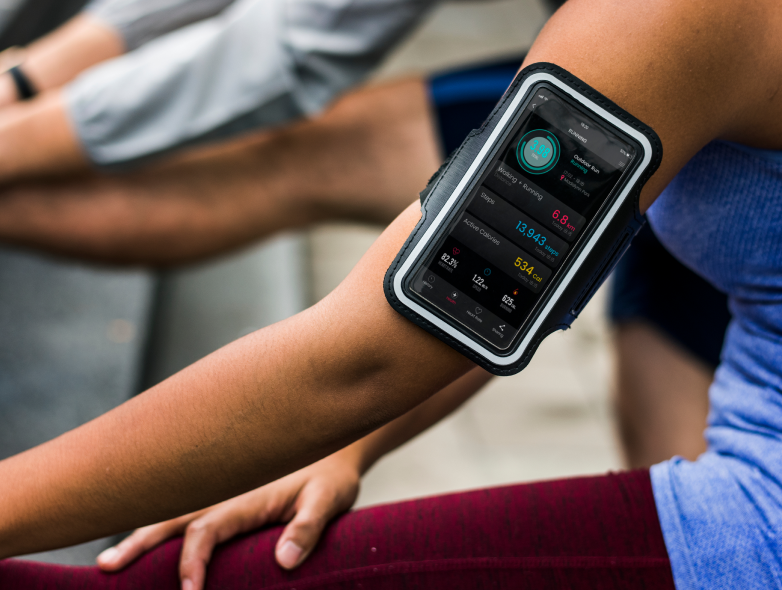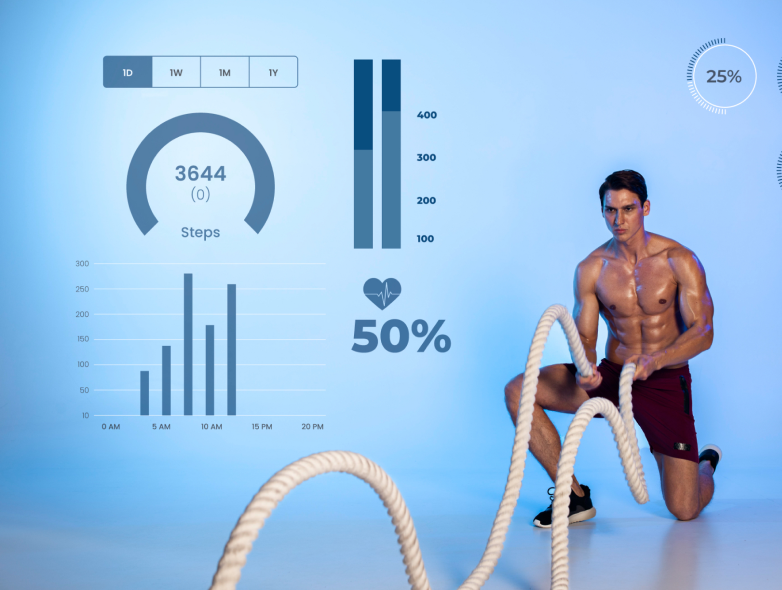Top Features You Must Include in Your Fitness App Development
The demand for fitness apps has skyrocketed in recent years, with more users looking for ways to track their workouts, monitor their health, and maintain a healthy lifestyle. In 2023, fitness apps had 368 million users and were downloaded more than 850 million times. Whether you're a fitness entrepreneur or gym owner seeking the best gym management software, having an intuitive and feature-rich fitness app is crucial. In this blog, we will discuss the essential features needed for fitness app development and how they can help create a powerful fitness app for Android or iOS.
Essential Features for a Successful Fitness App

User Profile & Personalization
A great fitness app allows users to create a profile and customize their experience based on personal fitness goals. Users should be able to input key details such as weight, height, fitness level, and target goals. The app should offer personalized workout plans and meal suggestions based on user data, ensuring a tailored fitness journey.
For instance, MyFitnessPal provides customized diet plans based on a user’s eating habits, making it easier to stay on track. Personalization also includes adaptive AI recommendations that evolve with the user’s progress, ensuring continuous motivation and improvement.
Workout & Exercise Library
A fitness app must feature a diverse exercise library that includes video demonstrations, animations, and detailed descriptions of workouts. With the right fitness app development approach, users can easily follow guided workouts and maintain consistency.
A great example is Nike Training Club, which offers categorized workout plans for different fitness goals, helping users find the right exercises based on their requirements. The app should also include filters for sorting workouts based on duration, intensity, and target muscle groups, making it easier for users to choose their preferred routines.
Nutrition & Diet Planning

A well-rounded fitness app should include nutrition tracking, meal planning, and calorie counting to help users maintain a balanced diet. Users should be able to log their meals, track macronutrient intake, and receive meal recommendations based on dietary preferences.
Lifesum is a great example of an app that integrates meal tracking with personalized diet plans, allowing users to achieve their fitness goals effectively. Additionally, AI-driven diet suggestions based on past eating habits can provide users with better meal planning insights. The best beginner workout app should also incorporate nutrition tracking, helping users balance their workouts with proper meal planning. Integrating barcode scanning for food items and a vast database of nutritional values will further enhance the user experience.
Integration with Wearable Devices & Trackers
For enhanced tracking and a seamless experience, fitness app development should include compatibility with wearable devices like Fitbit, Apple Watch, and Garmin. This feature allows real-time synchronization of heart rate, step count, and calorie burn data.
Fitbit’s app, for example, syncs real-time workout data with its mobile application, giving users better insights into their fitness journey. This feature is crucial for those who rely on smart wearables to track daily activity levels. It also allows users to set activity reminders, track sleep patterns, and analyze their health trends over time.
AI-Powered Virtual Trainer

An AI-powered virtual trainer enhances fitness app development by providing real-time feedback, analyzing workout patterns, and recommending modifications to improve performance. It can suggest modifications to exercises, recommend progressive challenges, and ensure that users maintain proper form. Freeletics, for instance, uses an AI coach to customize workouts based on user input, helping them stay on track with their fitness goals. By utilizing AI and machine learning, fitness apps can adapt to user progress dynamically, creating a more engaging and effective fitness experience. Additionally, this feature can act as a 24/7 digital coach, reducing the need for in-person training sessions.
Gamification & Rewards
Gamification elements like challenges, badges, and rewards encourage users to stay active and engaged. Leaderboards, achievements, and progress tracking make workouts more enjoyable and competitive. Strava’s competitive challenges and social sharing features keep users motivated to push their limits. Adding milestones and streak-based incentives can further enhance engagement, making fitness a fun and rewarding experience. Users can earn redeemable points for completing daily workouts, which can be used for discounts on fitness products or premium app features.
Live Streaming & Virtual Training Sessions
With the rise of virtual fitness classes, apps should offer live streaming and on-demand workout sessions. This feature allows users to join real-time training with professional instructors from the comfort of their homes. Peloton, for example, offers interactive cycling and running classes that provide real-time feedback and community engagement. Live streaming workouts increase accountability and motivation, making fitness routines more structured. Additionally, this feature allows trainers to provide personalized instructions and encouragement, enhancing the overall workout experience.
Social Media & Community Engagement
A fitness app development process should focus on fostering community interaction by enabling users to share their progress, participate in fitness challenges, and engage with fellow fitness enthusiasts. Features such as social feeds, discussion forums, and friend challenges create a sense of accountability and motivation, enhancing user engagement and long-term retention.
FitOn, for instance, includes a social feature where users can connect, share achievements, and support each other’s fitness journeys. Integrating social media sharing capabilities allows users to showcase their progress, encouraging more engagement and app retention.
Subscription & In-App Purchases
Monetization plays a crucial role in sustaining a fitness app. Offering premium content, personalized coaching, and exclusive workout plans through subscription models can generate revenue.
Apple Fitness+, for example, provides premium guided workouts on a subscription basis, allowing users access to high-quality training sessions. Users can also purchase one-on-one coaching sessions, nutrition plans, and exclusive fitness content, providing additional revenue streams for app developers.
Advanced Features for a Competitive Edge

AI Chatbots & Voice Assistance
Incorporating AI-driven chatbots and voice assistants can enhance user experience by providing instant guidance, answering fitness-related queries, and sending workout reminders.
Google Fit, for example, offers personalized voice-based fitness tips to help users stay on track with their health goals. This feature ensures a seamless user experience, allowing users to interact with the app hands-free.
Health & Medical Monitoring
Advanced fitness apps should include health monitoring features that track heart rate, oxygen levels, and medical reports. Samsung Health integrates medical data tracking to provide users with insights into their overall well-being. This feature is essential for individuals who need to monitor their vitals closely, ensuring they stay within safe health parameters.
Best Gym Management Software Integration

For gym owners and fitness centers, integrating the best gym management software into a fitness app can streamline membership management, class bookings, and payment processing.
GymMaster, for example, provides CRM, attendance tracking, and billing automation to enhance operational efficiency. This feature simplifies business operations, making it easier for gym owners to manage their facilities effectively.
Best Beginner Workout App for a Seamless Fitness Journey
A well-designed workout app enhances user experience and usability. The best beginner workout app should offer intuitive navigation, visually appealing interfaces, and easy-to-follow workout routines. It should include guided exercises, progress tracking, and personalized fitness plans to help beginners stay motivated.
Conclusion
Building a successful fitness app for Android or iOS requires AI-driven coaching, gamification, wearable compatibility, and medical tracking to enhance user engagement. Ensuring seamless navigation, performance, and personalized workout experiences keeps users motivated and active.
For fitness businesses, integrating gym management software streamlines membership handling, scheduling, and payments, improving operational efficiency. If you're looking for a reliable partner to bring your fitness app idea to life, ClickBox is the best app development company in India. Our expert developers specialize in crafting high-performance fitness apps with advanced features tailored to your business needs.
Ready to develop a feature-rich fitness app? Contact our experts!
John Click
Digital Marketer | SEO Copywriter | Content Strategist
Experienced digital marketer with a proven track record in creating compelling content that not only engages audiences but also drives conversions and enhances SEO visibility. My expertise extends beyond marketing strategy to crafting persuasive narratives that resonate with your target audience. I combine data-driven strategies with captivating writing to deliver measurable results, ensuring your brand shines in the digital landscape.
John Click
Digital Marketer | SEO Copywriter | Content Strategist
Experienced digital marketer with a proven track record in creating compelling content that not only engages audiences but also drives conversions and enhances SEO visibility. My expertise extends beyond marketing strategy to crafting persuasive narratives that resonate with your target audience. I combine data-driven strategies with captivating writing to deliver measurable results, ensuring your brand shines in the digital landscape.




 Digital Marketing
Digital Marketing


 Digital Marketing
Digital Marketing Digital Marketing
Digital Marketing



